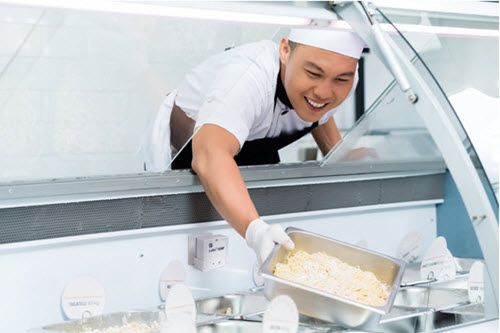Temperature monitoring technology meets complex demands
Posted on 6th Apr 2021
 Food-safety challenges have increased, but new solutions are emerging as well.
Food-safety challenges have increased, but new solutions are emerging as well.
With the third World Food Safety Day approaching June 7, following a year in which the COVID-19 pandemic disrupted the entire global food chain, now may be a good time for supermarket operators to take a comprehensive look at the state of their food-safety operations.
Foodborne disease causes an estimated 600 million illnesses and hundreds of thousands of deaths worldwide each year, according to the World Health Organization. In the U.S., the Centers for Disease Control and Prevention estimates that 3,000 people die each year from foodborne illnesses.
Several factors may be increasing the risk of foodborne illness, including the growing volume of foods from around the world that food retailers offer. In the U.S., about 15% of the food supply is imported from more than 200 countries or territories.
In addition, as more consumers have turned to cooking meals at home during the pandemic, many may be unfamiliar with proper food-handling procedures.
A critical link
Supermarkets form a critical link in this supply chain, and their role as gatekeepers between suppliers and consumers has only grown more complicated as retailers have added more prepared foods to their offerings. These are all potential danger zones for harmful bacteria, and they are often scattered throughout the store, from self-serve hot and cold bars to deli cases and made-to-order prepared-food stations.
Technology to help mitigate food-safety risks is evolving rapidly, however.
In a presentation last year discussing the Food and Drug Administration’s New Era of Smarter Food Safety Blueprint, Frank Yiannas, deputy commissioner for food policy and response at the FDA, emphasized that data-driven digital solutions—such as the use of blockchain to trace food-borne illnesses to their source—could play a role in protecting the global food system, among other benefits.
“We believe a digitized food system is likely to be a stronger, more agile, interoperable and resilient food system,” he said.
It may be years before technology can be fully leveraged for these purposes. But supermarkets can take immediate advantage of other emerging technologies that help them reduce the risk of foodborne illness at their own stores, and prepare for a more automated and data-driven future.
Meeting today's complex demands
The DayMark® Temp Monitoring and Food Check Solution, powered by JRI, meets the demands of today’s complex food-safety challenges. The system features robust hardware and user-friendly software designed for a diverse foodservice environment. It now also includes LoRa technology, which allows for longer-range communication between components of the Temp Monitoring system.
LoRa, which has gained increasing importance amid the growing use of connected devices, uses a low frequency that can travel further and can be customized in order to optimize messaging by avoiding obstacles. This technology is especially well-suited for large-format spaces where points of measurement are spread out and there are obstacles scattered across the store—such as the various salad bars and coolers found in supermarkets—and/or heavy foot traffic.
“The LoRa technology gives the system the ability to customize its frequency in order to best send messaging and avoid obstacles,” says AJ Haas, category manager of food-safety tech at DayMark. “This provides for more reliable results and the increased flexibility that larger footprint operations—such as supermarkets—need.”
The system is compliant with Hazardous Analysis of Critical Control Point (HACCP) food-safety protocols, and is accurate, easy to use and saves operators time and money by eliminating the need for manual temperature monitoring, hand-recorded logs and paper audits.
According to the LoRa Alliance, a nonprofit organization seeking to advance the deployment of this technology, JRI’s LoRa temperature monitoring solutions have been employed across a range of applications. Those include warehouses, cold rooms, refrigerators and freezers, as well as in transport applications such as vehicles and containers. The solutions have been deployed widely by several global food manufacturers, as well as hospitals, blood banks and the pharmacy industry.
In a preview of this year’s World Food Safety Day, Francesco Branca, director of the department of food safety and nutrition at the World Health Organization, emphasized that food safety is “everyone’s business.”
“The good news is that most foodborne disease is preventable,” he said. “Everyone should know that all of us have a role in keeping food safe, whether we produce, process, sell, prepare or share food with friends or family, you can take concrete actions to keep food safe.”
For more information about how your food retailing operation can play a role keeping food safe with state-of-the-art temperature monitoring and other solutions, visit https://www.daymarksafety.com/temp-monitoring-demo/
Article originally appeared on the Supermarket News website.


